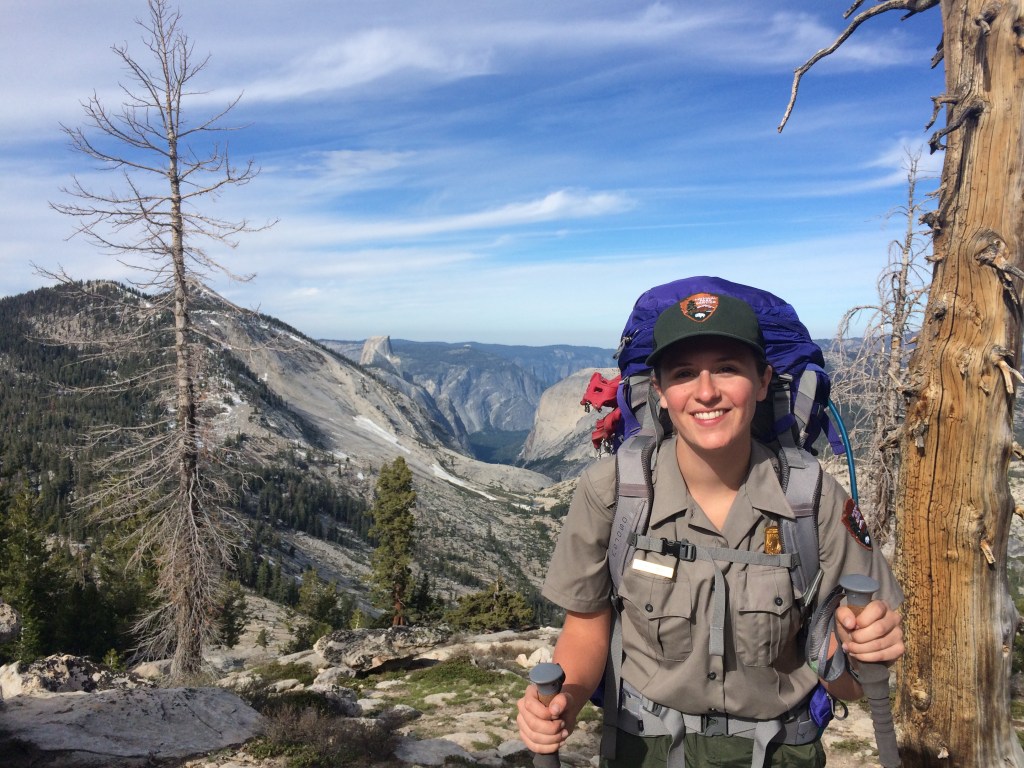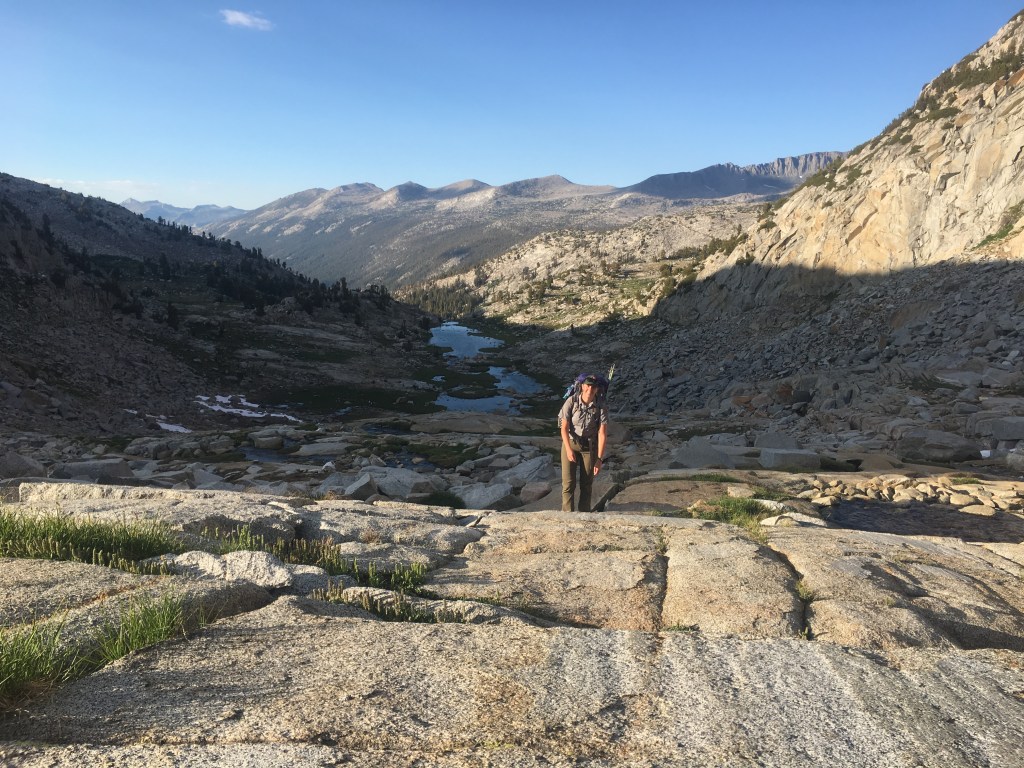Through our Keepers of the Outdoors series, we’ll introduce you to people who protect and care for our wild places.
“I’m fascinated by how we define wilderness,” says Emily Noyd, backcountry ranger in Yosemite National Park. “The concept of wilderness is so intangible, and it’s fascinating to me that to effectively govern that land we’ve had to develop rules to define it.”
While the concept of wilderness can hold a different meaning to each visitor—granite cliffs, untamed wildlife, breathtaking waterfalls, uninhabited valleys—the Wilderness Act of 1964 defines the official land designation. “A wilderness, in contrast with those areas where man and his own works dominate the landscape, is hereby recognized as an area where the earth and its community of life are untrammeled by man, where man himself is a visitor who does not remain.”
Management of congressionally designated wilderness areas is spread across four federal agencies: the U.S. Forest Service, the National Park Service, the Bureau of Land Management and the U.S. Fish and Wildlife Service. “You can think of wilderness areas as a different layer of management,” Emily says. “I always suggest that people check out the great interactive maps online. In Yosemite National Park, for example, 94 percent of the park’s land is wilderness. That wilderness is where I work.”

Traversing one of only two remaining glaciers in Yosemite National Park, Lyell Glacier, en route to the tallest peak in the park boundary: Mount Lyell at 13,120 feet. (Photo Credit: Jen Skubicki)
Emily, 25, enjoyed studying the natural world in high school, but she first discovered her interest in working outdoors when she completed the George Melendez Wright Climate Change Fellowship Program in Sitka, Alaska, during a summer break from her degree in environmental studies at the University of Washington Program on the Environment. “I found that I was very passionate about the park service, so I just kept building on those skills. I started as an interpretive ranger—you know, with the classic flat-topped hat—in the North Cascades National Park, but I found that I was more passionate about interacting with people who are going into the backcountry. That user group resonates with me, because they share my sense of curiosity and reverence. I love sharing my enthusiasm and insider tips with those visitors.”
Her first season as a backcountry ranger was in the North Cascades in 2015, and she moved south to Yosemite for the 2016 and 2017 seasons. Since starting work as a backcountry ranger, she’s also become a Wilderness EMT, a Leave No Trace trainer, and has done extensive search and rescue technical rope training. In the off-season, she works as a ski patroller at Mount Bachelor, which requires that she maintain an Outdoor Emergency Care certification, too.

Emily says she was “sweaty, dirty and happy” on her first wilderness patrol in Yosemite National Park, June 2016. (Photo Credit: Brian Turner)
Her work as a ranger is full time between May and October, and her shifts are usually nine days per two-week pay period. They’re broken down into three chunks: three days in the office, three days in the field and three days back in the office.
In the office, her main job is to help with trip planning and permit issuing. “I talk to a lot of visitors who are going to go use the backcountry in Yosemite and want to plan a backpacking or climbing trip. Some people are really prepared; for them I print permits, go over Leave No Trace protocols, and send them out to enjoy the park. Other groups have less experience, and with them I’m really involved in every part of the trip planning process. I ask crucial questions, like: How far do you want to go? What gear do you have? What temperature is your sleeping bag rated to? What kind of experience do you want to have here? And then I get to help people craft experiences that make their dreams come true. It takes patience, but it’s so rewarding.”
“It’s really special to be part of something that’s bigger than myself. That’s why I go outside.”
When she’s in the field, she’s patrolling the more than 750 miles of trails in the Yosemite Wilderness. It’s a heavily traveled area: In addition to Yosemite’s plentiful visitors, there are also thru-hikers on both the Pacific Crest Trail (PCT) and John Muir Trail (JMT). Emily checks permits, maintains trails, answers questions, responds to emergencies and ensures campers are following proper bear protocol. “I’m constantly making noise while I hike,” she says, “so I don’t bump into many animals myself. But the bears in Yosemite are amazing—this summer, a black bear climbed a full pitch of 5.8 rock to reach a food cache. They’re so crafty and strong.”

Emerging from Lyell Canyon as the sun sinks low in the sky, Yosemite National Park, September 2017. (Photo Credit: Jen Skubicki)
There are challenges to the job, of course. “We have a door counter, and in the busiest months we get up to 900 people visiting every day. Answering the same questions can get repetitive. But people are so grateful—they’re so good-hearted and have genuinely good intentions. So, we work hard to stay fresh, support each other and stay patient with every single visitor.” It’s especially difficult, she says, during the busy season. “Parking lots are full at 10am. When families have driven for four hours to Yosemite from the Bay Area, it’s hard to turn them away.”
In the rare moments during the summer months when Emily isn’t working, she’s recovering hard. “There’s no cell service, and it’s revolutionary—if you make plans, you actually have to show up. We have lots of bonfires and hot tub time. After a backcountry patrol, I crave fresh fruit and good beer. And the community! My peers in Yosemite are the reason I’m so excited to go back.”
Despite her love for the job, though, Emily doesn’t see herself in her current position forever. “There’s often an unfortunate truth to working with the National Park Service,” she says. “The higher up you get in the organization, the less time you actually spend outside.” In the future, she imagines herself delving deeper into her work in search and rescue and/or emergency response—maybe as a paramedic, or something similar. She dreams about training a search-and-rescue dog.

“Rangers pointing at things, always,” jokes Emily. Ten Lakes, Yosemite National Park, September 2017. (Photo Credit: Chris Engebretson)
At the end of the day, it’s undeniable: Emily Noyd craves wilderness. “What does it mean to have wild places? Why is it important to have them? I think it’s really special to be part of something that’s bigger than myself. That’s why I go outside.”
She says it’s magical to work in a place that’s touched the lives of millions. “Everybody has a different experience when they go there, and I’m so drawn to the experience people have when they step off the road and into the wilderness. Even if it’s just a tiny 10 feet off the road, that experience is so wild and raw. And I get to help them reach that goal, and that’s the most magical thing in the world.”
